St. Boniface Hospital is now a SAFE Work certified facility after it recently passed an audit with the Manitoba Association of Safety in Healthcare (MASH) making us the first hospital in Winnipeg, and the first tertiary care centre in Manitoba to achieve this type of certification.
Author: Jamie Care
Staff at St. Boniface Hospital are praising one of their own who stepped up to help a couple in need after finishing a long shift over the Canada day long weekend. Vanessa Reina Regier, a pharmacy assistant, was leaving the hospital on the evening of July 3 when she noticed a man calling for help.
Ryan Thomas said he’s looking forward to the challenge of being the first Truth and Reconciliation Specialist at St. Boniface Hospital. It’s a newly created position and the first for the Winnipeg region.
St. Boniface Hospital is taking part in a special project over the next few weeks to acknowledge that the COVID-19 pandemic is now largely behind us, and say goodbye to COVID-19.

Two registered nurses at St. Boniface Hospital with very distinct backgrounds are reflecting on what the profession means to them. Karen Falk is getting ready to retire after 42 years of service, while Sukhpreet Mann is a new grad and international student who has been on the job for less than six months.
“It’s been rewarding but it’s also kind of exhausting,” said Mann, who works in the emergency department.
“I like getting to know the patients, advocating for them, just being there for them.”
Mann is from Punjab, India, and said she always knew she wanted a career in health care. But she wasn’t sure nursing was her calling until she moved to Winnipeg in 2017.
“I knew I wanted to work in a hospital setting or health facility. I knew that much,” she said.
“But when I came to Canada as an international student I was limited in choosing a specific career like pharmacy or dentistry. So I looked into nursing and after doing some research, I knew I would like it.”
Mann graduated from the University of Manitoba and did her senior practicum at St. Boniface Hospital.
“What I am learning about the job is that you have to be professional, but also a human being,” she said.
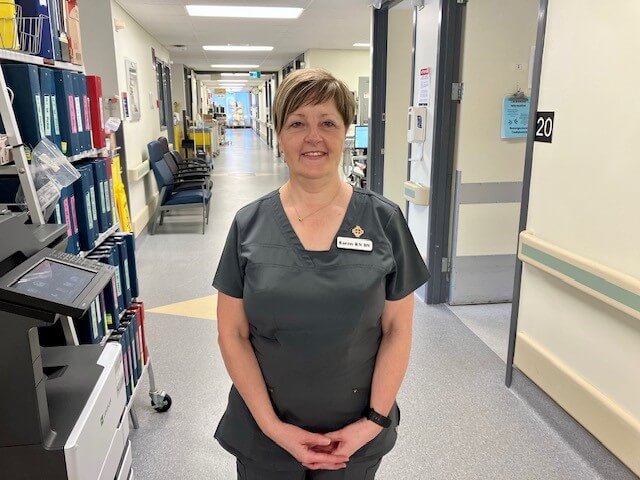
“If you can lend an ear and listen to patients, just be there for them and support them, I think that really makes a difference,” Mann said.
Karen Falk shares that sentiment. She’s been a nurse in Family Medicine for almost 42 years and has noticed many changes in the profession.
“I was one of the first medicine float pool nurses in 1981, when I graduated,” said Falk, who fondly recalls wearing her white cap.
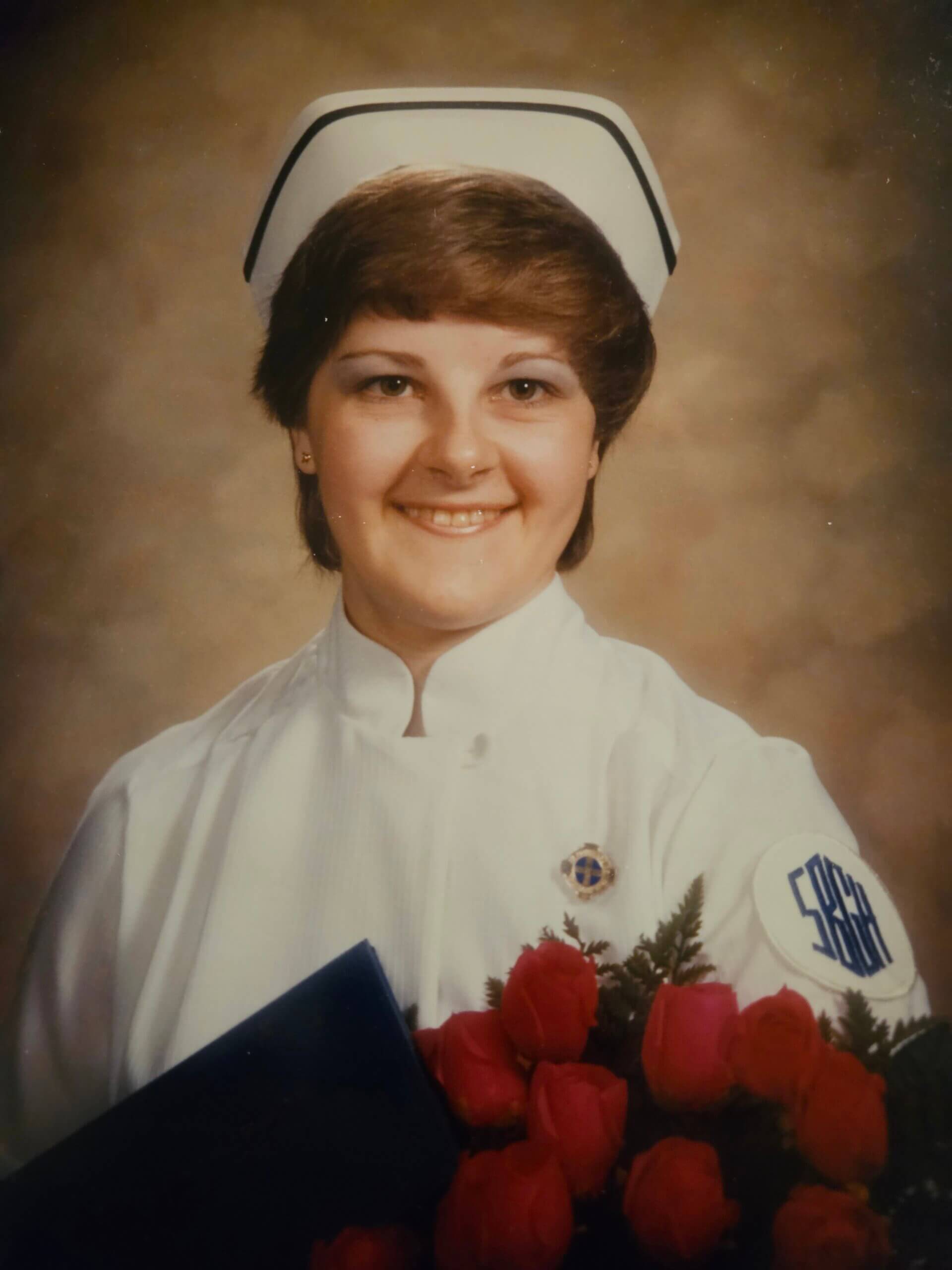
“I did wear my cap for many years,” she said with a laugh. “I was a bit of a dinosaur, I liked wearing my cap, I was thinking I worked this hard for it and I’m going to wear it!”
Falk now keeps her nursing cap in a memory box at home.
“Looking back at all the changes that have occurred in my career, and innovations in health care and different ways that we manage patients, it’s just very different from when I first started nursing,” Falk said.
She noted the focus that the new nurses have coming out of school now is different from when she was starting out.
“We had more of a holistic approach to nursing back then, and now we’ve become more task oriented. I think that’s likely because we are busier now, and the patients are sicker than when I first started nursing.”
Falk said being a nurse was a childhood dream for her, and she’s grateful for having such a long and lustrous career.
“I still think nursing is a wonderful profession. There’s so many things you can do with a nursing degree, it doesn’t have to be at the bedside if that’s not what you want to do,” Falk said.
She’s now focusing on her retirement, which is coming up at the end of this year.
Falk said while she’s ready to move on to her next life adventure, she said leaving St. B will be difficult because of the people she works with.
“I’ve seen so many staff come and go but we have always looked out for each other, we all treat each other like family,” she said
“My goal always was to work at St. Boniface Hospital, because I had always heard it was the best place to work.”
Falk also said she’ll miss all the connections she makes with her patients.
“I’ll miss all of it because nursing has been such a huge part of my life,” she said. “But I feel ready to pass the baton on to somebody else.”
As for Mann, she knows the job won’t be easy. But she considers it a privilege to serve the community.
“In my religion we have this term called seva, which means to meditate and serve mankind, without any thought of reward or benefit, so being a nurse is fulfilling for me in many ways.”
Proposed medication pouches for patients wins SBH Ideas Competition
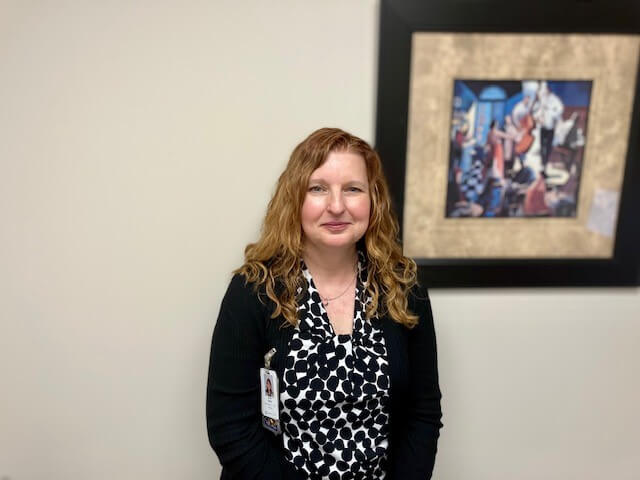
A pharmacy manager at St. Boniface Hospital is proposing the idea of distributing ‘fanny pack pouches’ to patients, which could help reduce the amount of medication that gets lost or wasted during their stay.
That solution was outlined in Carol Davis’s essay, which was the winning submission in the SBH Ideas Competition.
“I wanted to come up with an idea that checked off a lot of boxes that we talk about every day in our safety huddles,” said Davis, who has been a pharmacy manager at St. B for 12 years.
“I know from meetings with our pharmacy staff, having to refill medications when they know they have already been dispensed is definitely a source of disengagement, and it takes away their focus on the orders at hand.”
Davis said she’s concerned about the amount of medications like inhalers getting misplaced when a patient is transferred from one unit to another, specifically from the ED where there is no medication room.
“We know the medication ends up somewhere in the building, but where exactly? I don’t know,” she said.
Davis said Pharmacy receives multiple calls a day requesting medications be refilled unnecessarily once a patient arrives onto an in-patient unit. She said that medication is supposed to last the duration of the patient’s stay but it often goes to waste.
“Medications need to be a piece of the thinking as patients are transitioned throughout our facility,” Davis said.
“Some of these issues speak to the quality of our medication distribution system and efficiencies.”
For her competition-winning idea, Carol recommended the use of brightly colored pouches, that are easily visible, to store the medication. The pouches could be clipped to the bed or IV poles or worn by patients to prevent the medication from getting misplaced during a patient transfer.
It’s a solution she believes could save the hospital money on medication costs and reduce environmental waste.
“I do think we need to be mindful of the carbon footprint that we are leaving behind.”
The competition, initiated by SBH physician Dr Rizwan Manji, was launched on February 1, 2023, to gather innovative ideas from staff on how to address some of the challenges the hospital faces. More than 30 entries were submitted, with many wide-ranging ideas that tackle hospital inefficiencies, and improvements for staffing and workplace culture.
The second-place winners all work in Cardiac Sciences. They are Anita Maric, Dr. Lorraine Avery, and Craig Hillier, for their proposed idea of having a Staff Relaxation Centre. Third place went to Saxon Duncan, a nurse in NICU for her idea for an onsite daycare.
“I’m so humbled and very excited to be the winner of this contest,” Davis said.
“I had a lot of fun, and I’m grateful the hospital engaged staff to participate in this way.
“Even if my idea just brings awareness to the problem and gets the conversation going, it might lead to another solution out there that looks into medication transfer.”
The SBH executive and SBH Medical Advisory Committee, who jointly ran the competition, would like to thank everyone who submitted ideas. The executive is committed to exploring the feasibility of all the ideas received, whether they were deemed winners or not. Winning ideas may or may not be implemented, once the feasibility is assessed, while those ideas that were not awarded first, second or third prize will still be considered for implementation.
Congratulations Carol and thanks everyone for making this first-ever SBH Ideas Competition a success!
Mother praises video app that connects parents with babies in NICU

What started as a pilot project two and half years ago is now a popular app that keeps parents connected with their babies staying in the Neonatal Intensive Care Unit at St. Boniface Hospital.
vCreate Diaries is a secure video app that allows neonatal staff to record and upload video-clips and photos of the babies which are then shared directly with parents.
The service was a big help to Kelly Burtnyk and her husband who couldn’t always be with their baby girl Annie back in December of 2021.
“She was teeny tiny,” recalls Burtnyk.
Annie was born premature at 28 weeks weighing just 1 pound ten ounces. Her stay in the NICU lasted 88 days.
“It was a long time, and even though we were there every day it was so hard to leave because we couldn’t stay with her overnight,” she said.
Burtnyk said thanks to vCreate Diaries she was able to go home and get the sleep she needed knowing her baby was in good hands.
“It was really nice to get those photos and reassurances from the nurses during the night, reminders that our baby is okay even though she couldn’t be home with us.”
She said her favorite photo was the one she received that first Christmas after giving birth.
“We were at home and when we woke up we saw that we had photos of Annie that the nurses had taken in front of a Christmas back drop,” said Burtynky.
“It was special because it was one of the first times we had seen her whole face, because she was intubated for a while, on CPAP to keep her breathing, so we had never really seen her without any tubes covering her little face.”
“They took the picture quickly without the CPAP mask and that was the best vCreate moment for us, the nurses were just wonderful.”
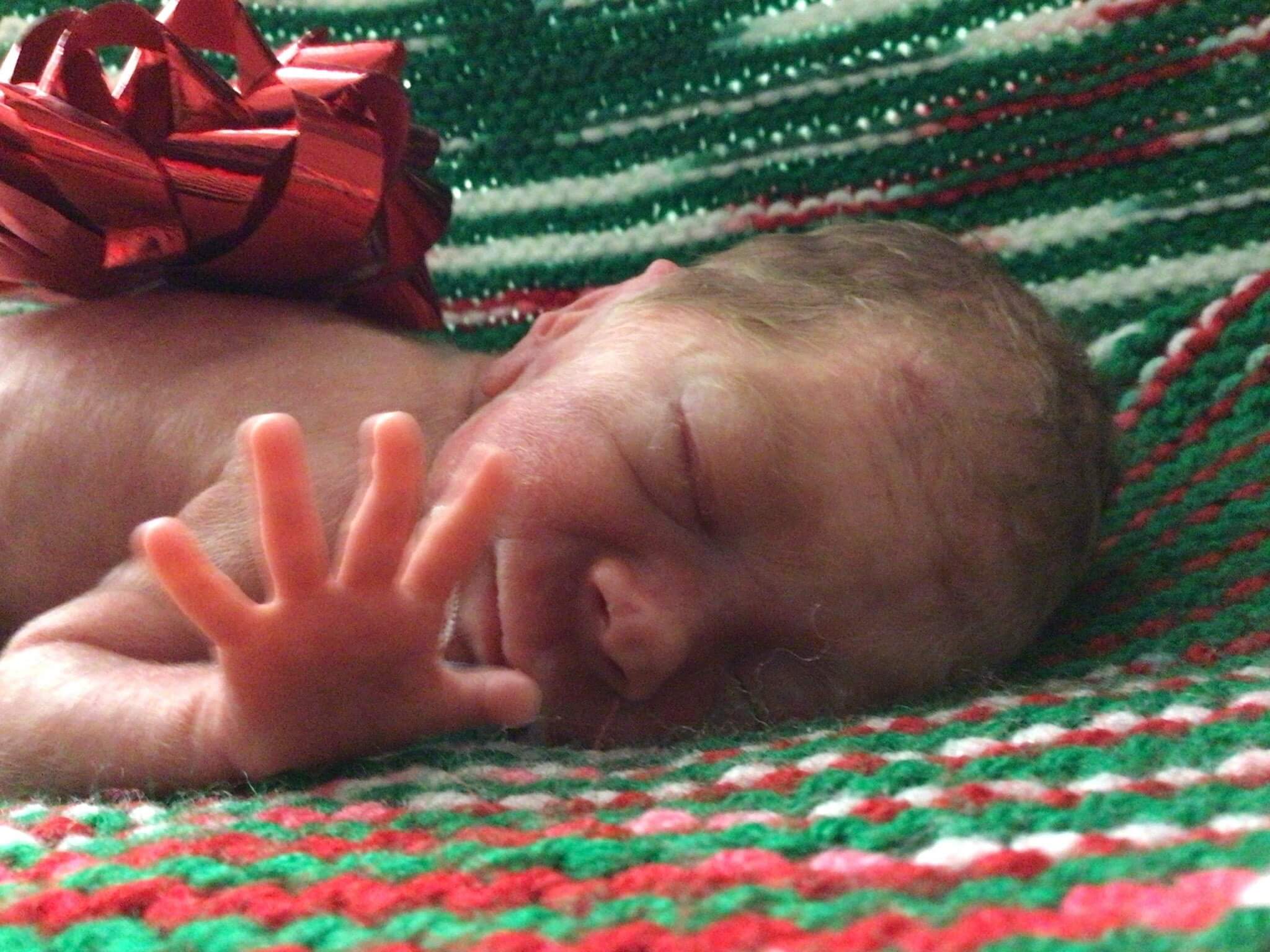
The service has been a huge success thanks to funding by the St. Boniface Hospital Foundation.
“The Foundation was delighted to help bring this technology to NICU parents and staff. Any time we can contribute to the hospital’s ability to meet the emotional needs of patients we are proud to answer the call. It’s incredible to see the real-life impact this initiative continues to have,” said Lisa Thomson Stifora, Director of Communications and Stewardship with St. Boniface Hospital Foundation.
So far, vCreate Diaries has helped more than 200 families since it launched in December of 2021.
“It’s so important for parents to have that connection,” said Cheryl Staerk, one of several NICU nurses that took care of Annie.
“When we see these little moments of their babies at three in the morning it just feels wrong, so if we can share those precious moments with the parents that’s very special,” said Staerk.
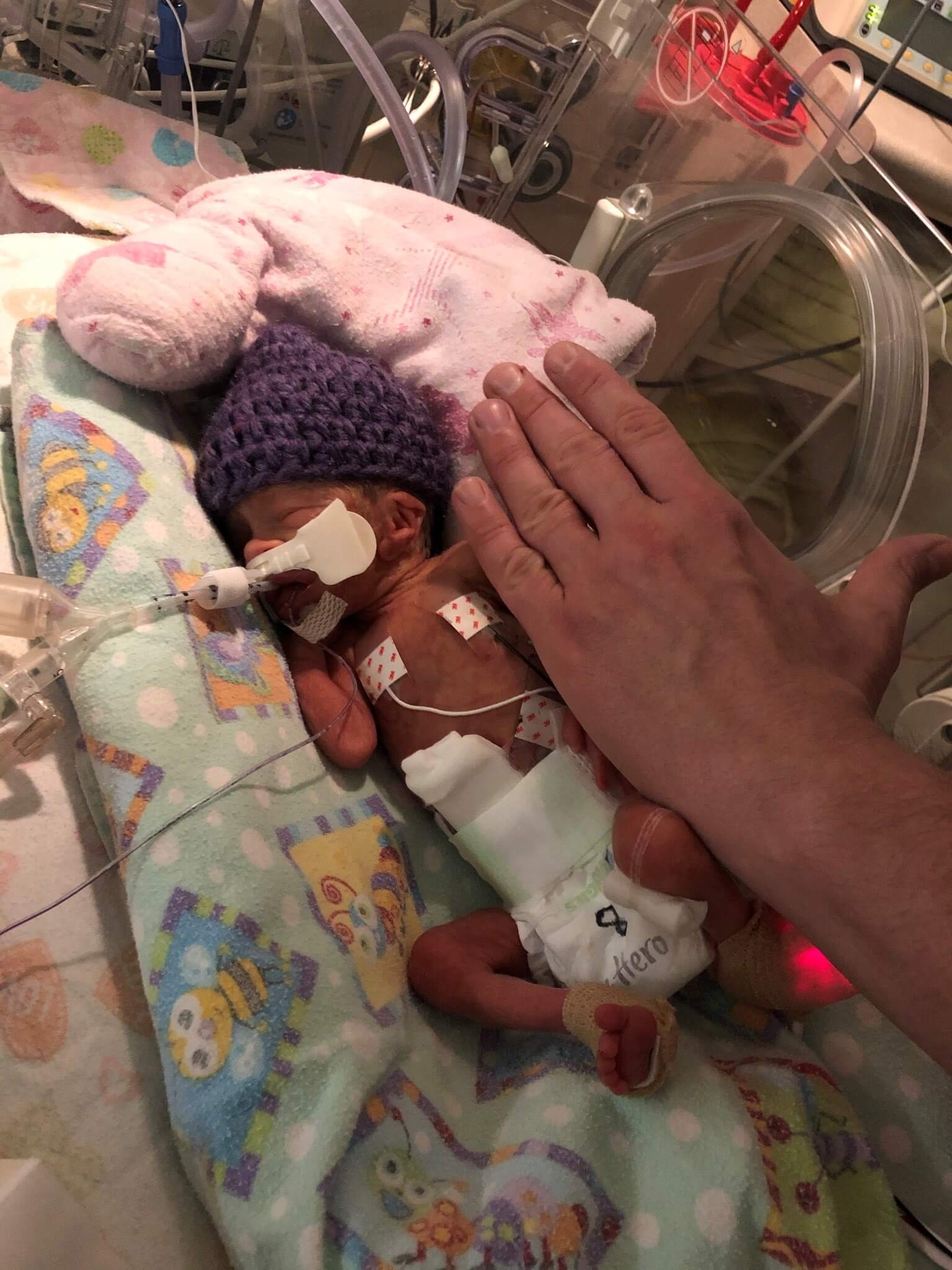
She said the service is invaluable in keeping parents connected with their babies when they can’t be by their side for whatever reason.
Annie is now a 16-month-old toddler and thriving.
“She’s fantastic, she’s still tiny but healthy has a big personality,” said Burtynk with a laugh.
She hopes to see vCreate Diaries used in more hospitals around the country.
“I think a program like this is so critical,” said Burtnyk.
“We were fortunate that we could spend as much time as we did at St. Boniface Hospital, but for those parents that live out of town, to get those messages and pictures of their baby, that is huge for a parent’s mental health.”
New wayfinding system with a fresh look coming to St. B

Visitors and staff at St. Boniface Hospital will soon be able to get around the site a little easier with new signage and colour-coded zones, as part of a hospital-wide wayfinding project.
“We want patients to get to their appointments easily, and help people find exits, and different rooms throughout the hospital more quickly,” said Senior Corporate Affairs and Engagement Officer Paul Turenne.
SBH has hired Fathom Studio, based in Nova Scotia, to design the new signage and wayfinding system. The company has done similar projects for the University of Manitoba campus, and national parks across Eastern Canada, among others.
Turenne said directional signs inside the main hospital, including the floor graphics, are getting a new look. One of the more noticeable changes will likely be the use of zones.
“We’re very likely going to be adopting zones throughout the hospital, where the hospital campus will be split into zones, so basically a new look with new symbols,” Turenne said, adding that room numbers will not be changing.
Each zone is expected to have a name with a symbol to make them easier to read.
“The ones we had drafted so far were Evergreen Forest, Golden Wheat, and Red Leaf for example, but this may change as this is all preliminary right now,” Turenne said.
A wayfinding committee at SBH was recently appointed, with representation from different work areas of the hospital to oversee the project’s signage, floor decals, and “super” graphics.
“We have people from volunteer services, we have screeners, we have someone from housekeeping, clinical units, capital planning,” Turenne said.
The committee did a workshop with Fathom Studio back in January looking into things like some of the trouble spots at the hospital where people typically get lost; identification of the most common destinations; common routes people take from one point to another within the hospital, and other such background information. That research has helped in the design process and will help improve a patient’s experience.
“The issue of getting lost comes up often, sometimes even in safety huddles. We have heard of patients missing appointments because they can’t find their way, or people with health problems arriving at an appointment out of breath and we don’t want that,” Turenne said.
The new wayfinding system will also be designed to encourage people to use “preferred routes” to get them where they need to go more efficiently.
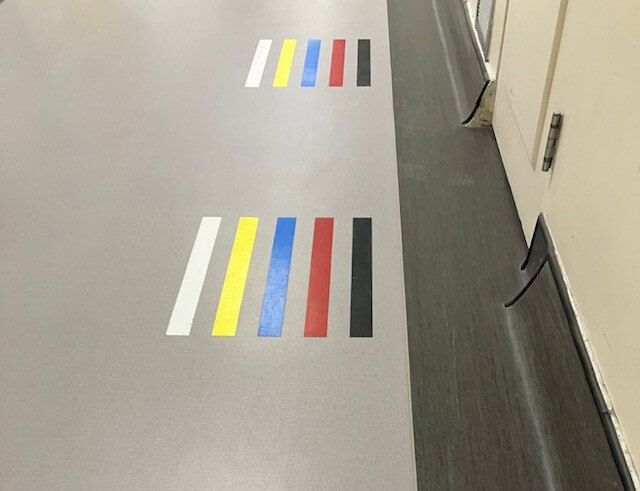
“Some of our buildings are connected,” Turenne said. “So instead of cutting through an inpatient unit to get from one building to another, the signs may direct people to go in a certain direction using the main floor, or up an elevator.”
Turenne said the project will also include braille signs in some locations for visually impaired patients.
The final design will be unveiled later this Spring. The installation of the new signs and graphics will be done in phases, with the first one set to begin in the second half of 2023. The first phase includes the interior of the main hospital’s atrium, hallways, elevator banks and staircases, as well as the tunnels to the West Block buildings like McEwen and Asper.
“We recognize the signs right now are all from different vintages, and different eras, but we are working on updating them, making them more accessible, to help get people where they need to be.”
As construction progresses on the Emergency Department redevelopment project at St. Boniface Hospital, some changes are coming that will impact the South Entrance of the hospital.
December 20, 2022 – St. Boniface Hospital Foundation announced today the completion of Manitoba’s first endovascular hybrid operating room. Foundation donors, who fully funded the initiative, made the $6.5 million project possible for St. Boniface Hospital.


